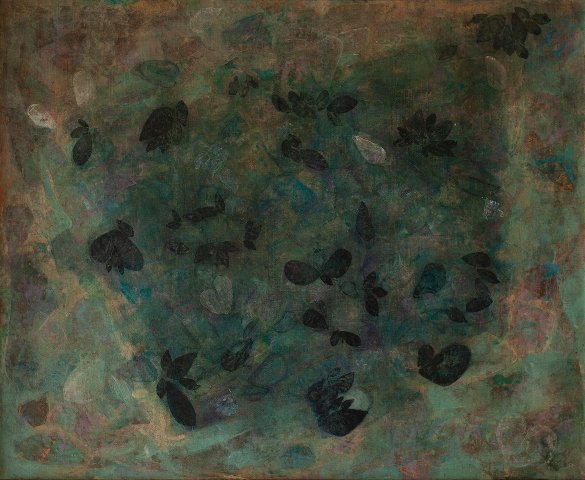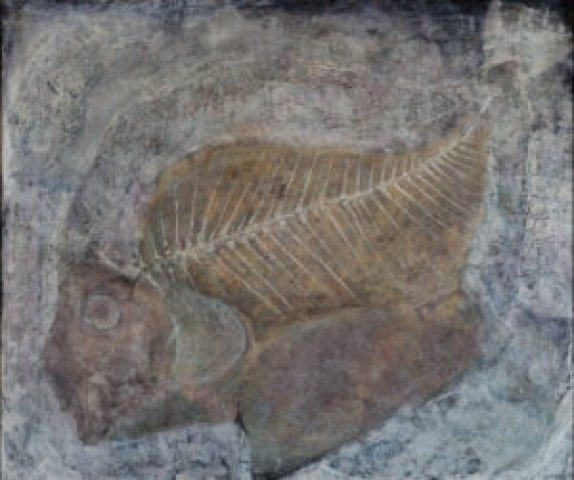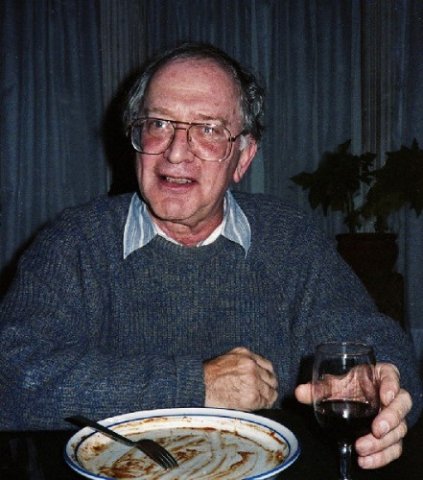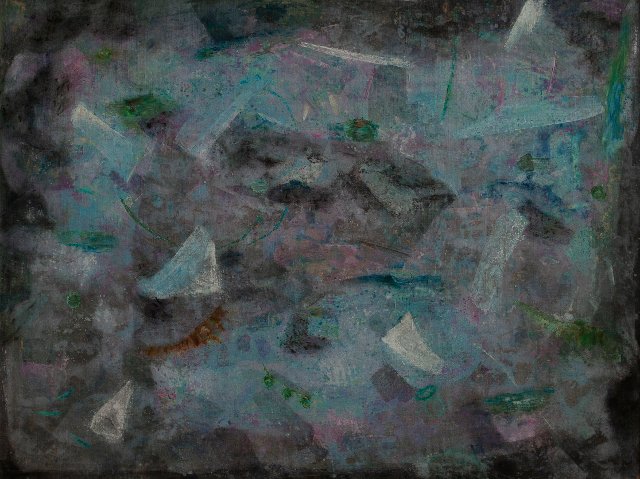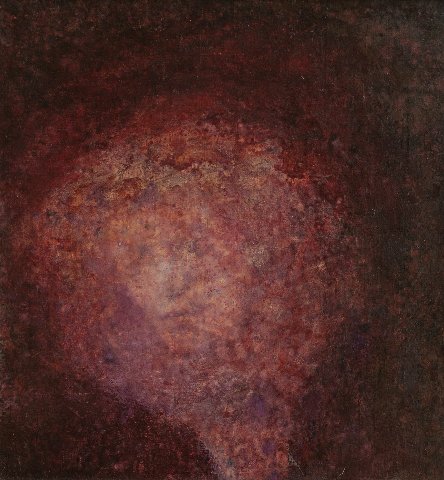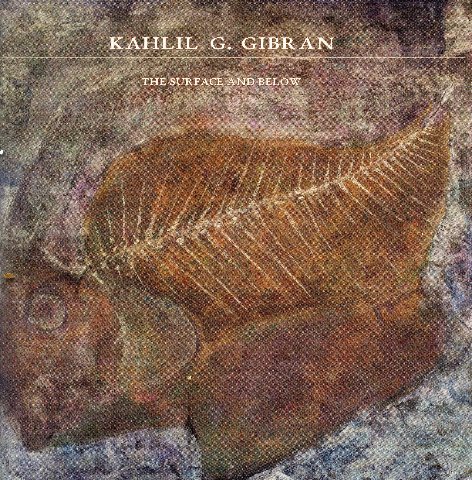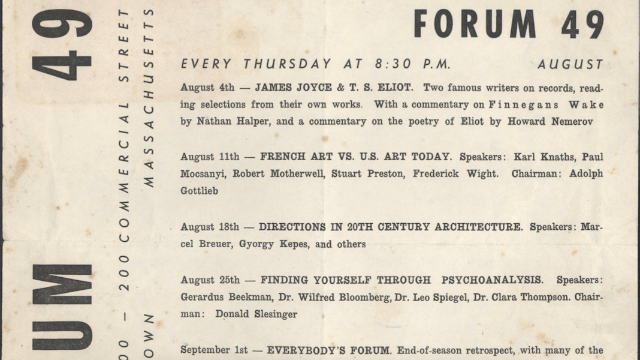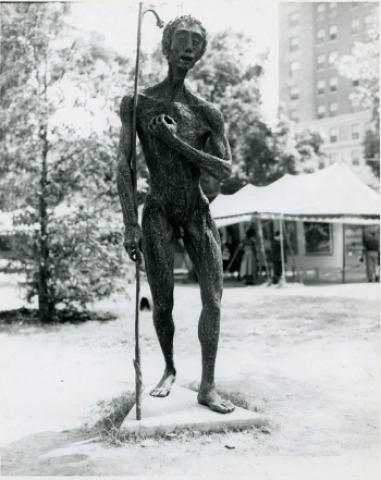Boston Artist Kahlil G. Gibran
Early Work at Ogunquit Museum of American Art
By: Charles Giuliano - Aug 02, 2021
Kahlil G. Gibran
The Surface and Below
Ogunquit Museum of American Art
May 1 to July 9, 2021
The Boston artist, Kahlil Gibran (November 29, 1922 – April 13, 2008), is known for welded steel and bronze figurative sculpture. This is the work I was introduced to by the Boston Arts Festival annual exhibitions in the 1950s on the Boston Public Gardens.
One of his first such efforts, “John the Baptist,” won the “Popular Prize.” The rods of the life-size sculpture seemed like a dissected cadaver forming the muscles. Then in my teens it left an indelible impression.
It appears, however, that Gibran turned to sculpture, mid career, through therapy resulting from a divorce. Prior to that he was a painter.
A small selection of paintings from the late 1940s at the Ogunquit Museum of American Art proved to be a stunning revelation.
At the School of the Museum of Fine Arts he studied painting with the German-born, Karl Zerbe. With Hyman Bloom and Jack Levine they were known as the Boston Expressionists. A commonality entailed figuration although their approaches were different.
Zerbe was known for teaching the mastery of media and techniques particularly the ancient technique of encaustic or working with wax. Material and process is a defining means of understanding the work of Gibran. He was also known for building and restoring musical instruments particularly those of the Middle East. He worked on objects for the Museum of Fine Arts as well as private collectors.
Like Bloom the young artist was interested in alternative forms of creativity, spirituality and music.
For several reasons, arguably the most interesting work in the exhibition of small works is “On the Beach”, 1949. It conveys a flat fish like a flounder with an emphasis on its skeletal structure. That may evoke Bloom’s cadaver works of that time.
What particularly intrigues is that it was created in Provincetown during the summer of 1949. The work is owned by the Provincetown Art Association and Museum.
The young artist at that time was beginning to be known as a Magic Realist but I am interested in his connection to Zerbe and the then evolving second generation of Boston Expressionists. This primarily came through the teaching of Zerbe. Bloom did not teach but was accessible to artists and exhibited with Boston’s Moris Mirski Gallery. Mustering out of the military after WWII Levine, a social satirist, moved to New York.
With the devastation of war Paris lost its dominance as the epicenter of global avant-garde art. Long regarded as provincial American art was coming into its own with the emergence of the New York School, Abstract Expressionism, and what Harold Rosenberg described as Action Painting.
During the war years Andre Breton, in the circle of Peggy Guggenheim, brought the nexus of surrealism to America. Arshile Gorky joined but defected from the group. Its approach, particularly automatic surrealism, would be a stepping stone for American artists.
There was a summer long Provincetown event Forum ’49 that explored this amalgam of strains and influences including psychoanalysis. That was particularly relevant to Jackson Pollock who underwent Jungian analysis.
It was organized by the artist Harry Weldon Kees (February 24, 1914 – disappeared July 18, 1955) who was a poet, painter, literary critic, novelist, playwright, jazz pianist, short story writer, and filmmaker. Despite his brief career, Kees is considered an important mid-twentieth-century poet.
Gibran and other Boston artists interacted with and were influenced by leading New York Artists. It was a high point for the artist colony as later New York artists opted to summer in the Hamptons.
It was intriguing to view the catalogue of Gibran’s works in the small Maine exhibition. While the “fish” painting is specific the others are abstract in a visionary manner conflating non objective elements and patterns of color and marking.Gibran was inspired by aquatic life including "Mussel Bed." Some paintings evoke more abstracted influences from Bloom who never abandoned a base in figuration. Some of Gibran’s abstractions visually connect to Mark Tobey, Morris Graves and the Northwest Visionaries.
There is no was of determining if Gibran knew their work although they appear to share a zeitgeist. Which is precisely what Forum ’49 was dedicated to exploring.
Based on the Maine exhibition, at least in the early years, Gibran appears to be consistent with the ethos of Boston Expressionism. That connection is less evident once he focused on sculpture.
There is much more to know about Gibran and a fertile generation of Boston artists which has been neglected by the art world. Most egregiously in their own home town.

